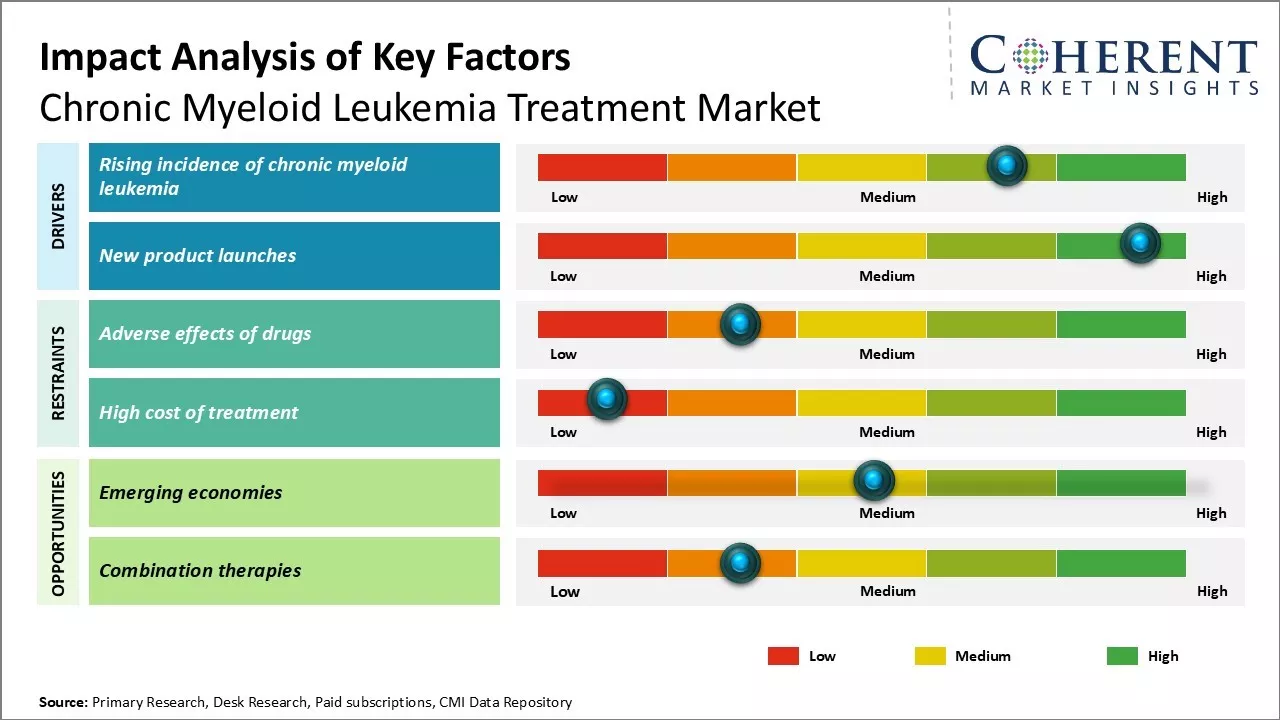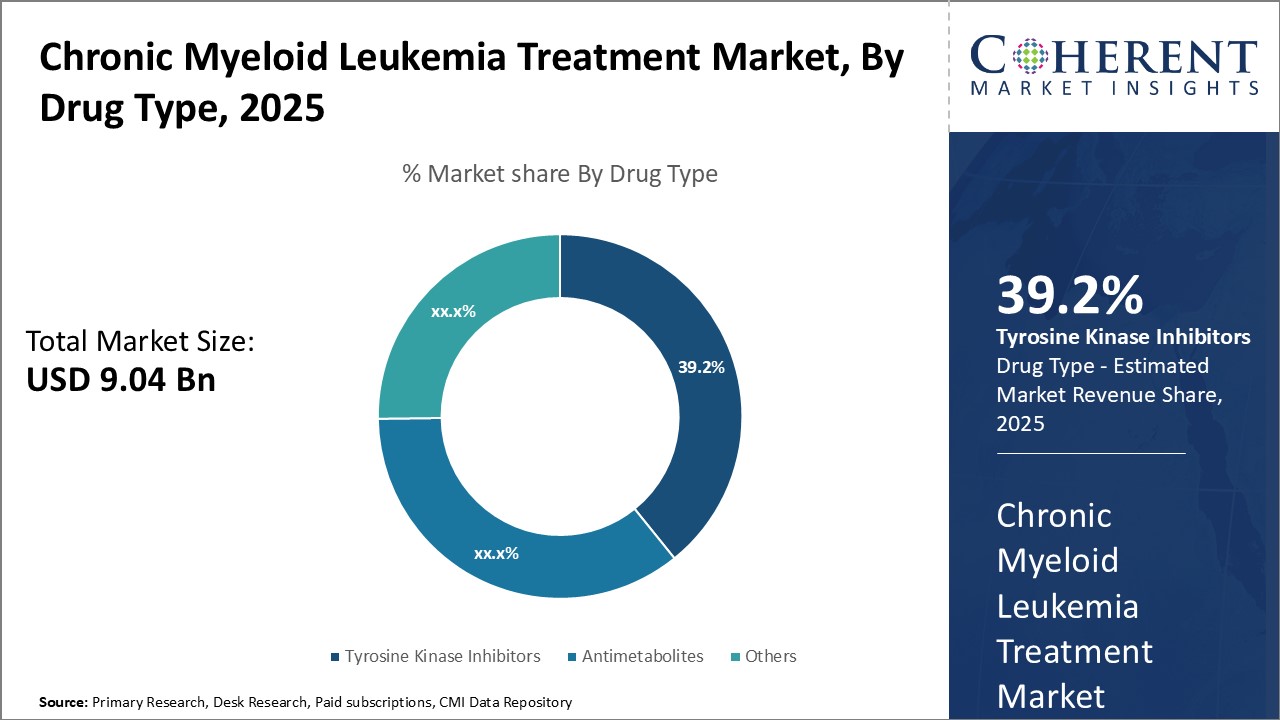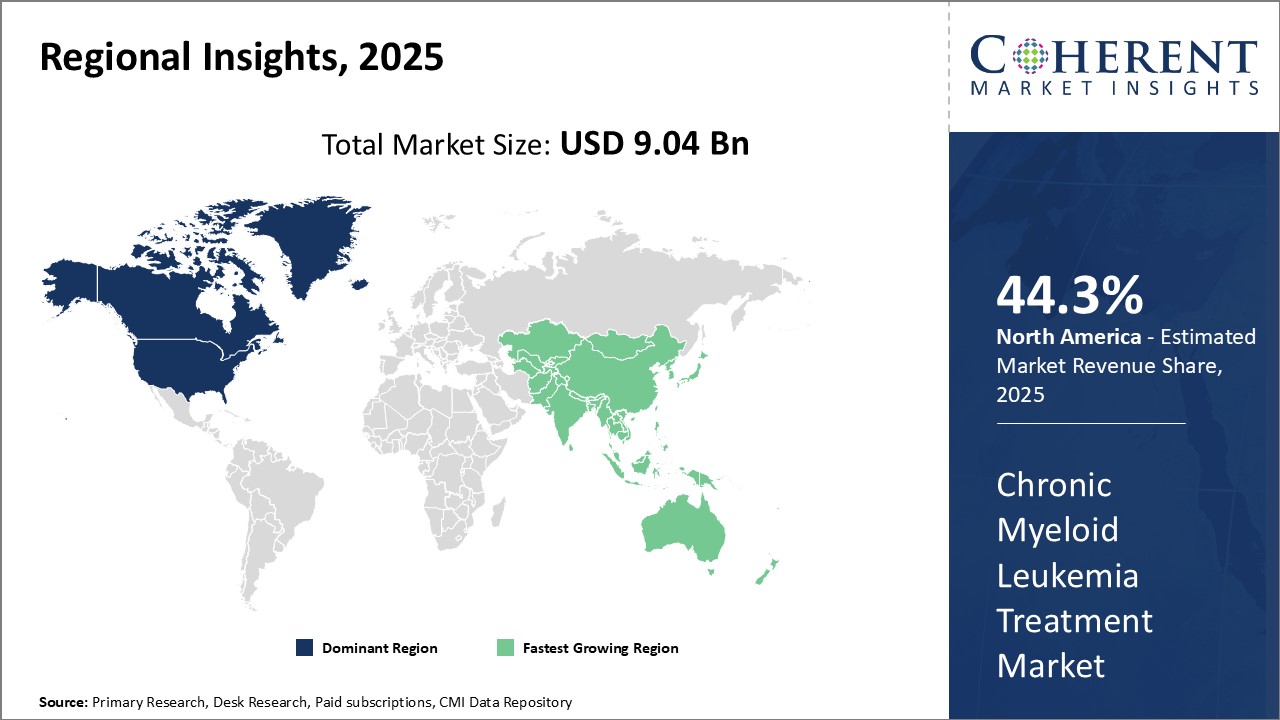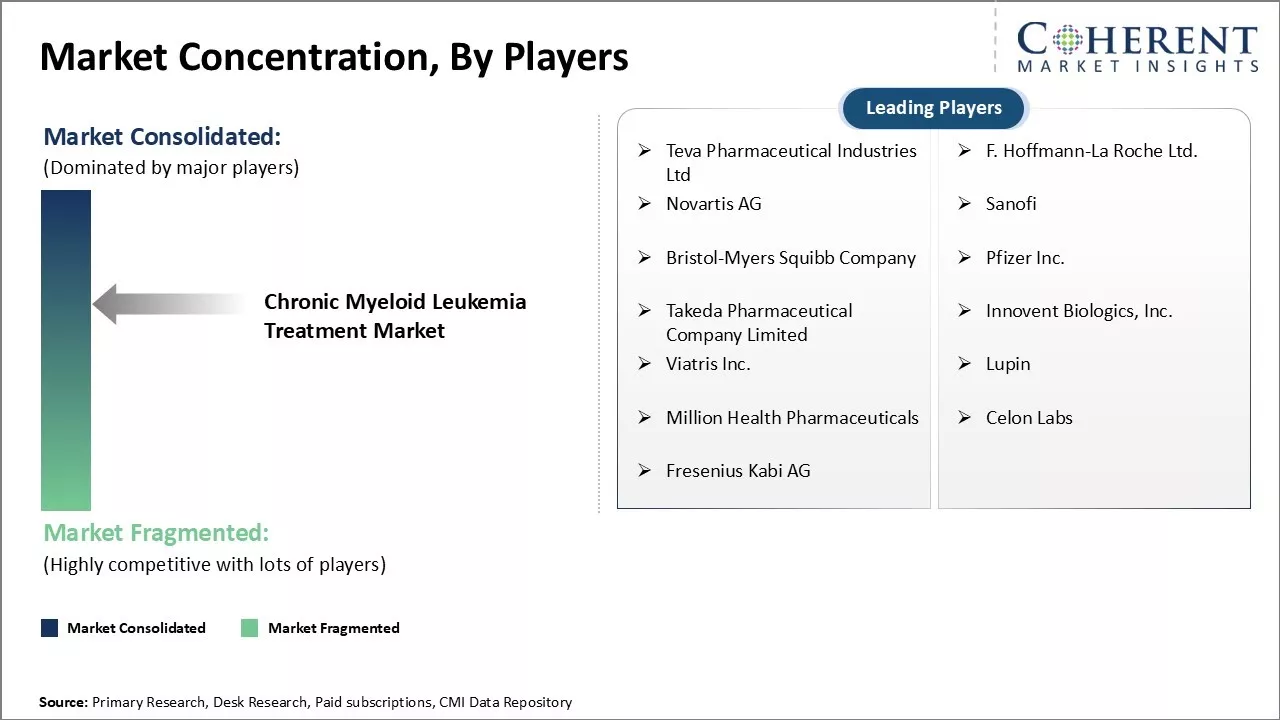The chronic myeloid leukemia treatment market is estimated to be valued at USD 9.04 Bn in 2025 and is expected to reach USD 14.24 Bn by 2032, exhibiting a compound annual growth rate (CAGR) of 6.7% from 2025 to 2032.

Discover market dynamics shaping the industry: Download Free Sample
The chronic myeloid leukemia treatment industry is expected to witness steady growth driven by increasing cases associated with chronic myeloid leukemia and availability of effective targeted therapies. Increasing access to novel therapies and pipeline drugs with better treatment outcomes has further augmented the demand for chronic myeloid leukemia treatment. Moreover, the approval and adoption of immunotherapies and personalized medicines may create new avenues for market growth. However, patent expiries of major drugs may hamper the revenue generation potential from CML treatment.

Discover high revenue pocket segments and roadmap to it: Download Free Sample
Insights by Drug Type: Tyrosine Kinase Inhibitors Segment Leads with Increased Safety and Efficacy
In terms of drug type, tyrosine kinase inhibitors segment is expected to hold the highest market share of 39.2% in 2025, due to their proven efficacy and safety. TKIs like imatinib and dasatinib have been first-line treatments for chronic myeloid leukemia treatment for over a decade, effectively managing disease progression and reducing recurrence risks when taken continuously as prescribed.
Insights By Route of Administration: Ease and accessibility push adoption of oral administration
In terms of route of administration, oral segment is expected to hold the highest share of 42.2% in 2025 owing to the convenience and practicality it offers patients. The widespread availability of oral formulations ensures accessibility without geographical barriers, leading to higher compliance compared to other routes that require specialized support.
Insights By Distribution Channel: Streamlined care drives preference for hospital pharmacies
In terms of distribution channel, hospital pharmacies segment is expected to hold the largest share of 52.9% in 2025. This is due to their ability to provide a seamless care experience, essential for long-term management of CML, which often requires adjustments based on patient response and side effects. Their integrated role facilitates effective communication among healthcare teams, optimizing treatment outcomes.

Need a Different Region or Segment? Download Free Sample
Dominating Region: North America
North America is expected to account for the greatest revenue share of 44.3% in 2025 in chronic myeloid leukemia treatment industry. This dominance is driven by the strong presence of leading biopharmaceutical companies, advanced healthcare infrastructure, and favorable government policies that promote research and development activities.
Fastest-Growing Region: Asia Pacific
Asia Pacific region exhibits the fastest growth with 19.8% market share in 2025. This is due to rising healthcare expenditure, growing awareness about chronic diseases, and strong focus of international players to tap into growth opportunities in emerging countries such as India.
Chronic Myeloid Leukemia Treatment Market Outlook for Key Countries
U.S. sees significant R&D Investments
The U.S. chronic myeloid leukemia treatment industry is dominated by major pharmaceutical companies that consistently invest in innovative drug development. Key players like Pfizer Inc. allocate substantial resources to research and development, focusing on discovering novel therapeutics and enhancing existing treatments. This commitment to innovation ensures the availability of effective therapies for patients, addressing the growing demand for advanced treatment options in this critical healthcare sector.
China's favorable government initiatives
China's favorable government initiatives for chronic myeloid leukemia treatment have significantly improved disease management and outcomes. Recent healthcare reforms focus on enhancing access to high-quality medical services, integrating modern therapies, and strengthening healthcare infrastructure. These efforts aim to provide better support for patients, ultimately leading to improved treatment efficacy and accessibility across the nation. The reforms include expanding health insurance coverage and investing in primary healthcare systems.
Japan’s progressive research and rising medical tourism
Japan continues to lead in Asia Pacific for chronic myeloid leukemia treatment, due to its advanced healthcare infrastructure, skilled professionals, and rising medical tourism. The country’s commitment to cutting-edge technology and high-quality medical services attracts international patients seeking specialized care, enhancing treatment outcomes and making Japan a preferred destination for those requiring innovative therapies.
India's rapid expansion due to growing accessibility of healthcare services
India is a leading destination for CML treatment, driven by its advanced healthcare infrastructure and highly skilled professionals. The country's commitment to cutting-edge technology and high-quality medical services attracts international patients seeking specialized care. This focus on innovative therapies enhances treatment outcomes, making Japan a preferred choice for those requiring effective management of CML.

Get actionable strategies to beat competition: Download Free Sample
Top Strategies Followed by Chronic Myeloid Leukemia Treatment Market Players:
Emerging Startups in the Chronic Myeloid Leukemia Treatment Market:
Key Takeaways from Analyst
Chronic Myeloid Leukemia Treatment Market Report Coverage
| Report Coverage | Details | ||
|---|---|---|---|
| Base Year: | 2024 | Market Size in 2025: | USD 9.04 Bn |
| Historical Data for: | 2020 To 2024 | Forecast Period: | 2025 To 2032 |
| Forecast Period 2025 to 2032 CAGR: | 6.7% | 2032 Value Projection: | USD 14.24 Bn |
| Geographies covered: |
|
||
| Segments covered: |
|
||
| Companies covered: |
Teva Pharmaceutical Industries Ltd, F. Hoffmann-La Roche Ltd., Novartis AG, Sanofi, Bristol-Myers Squibb Company, Pfizer Inc., Takeda Pharmaceutical Company Limited, Innovent Biologics, Inc., Viatris Inc., Lupin, Million Health Pharmaceuticals, Celon Labs, and Fresenius Kabi AG |
||
| Growth Drivers: |
|
||
| Restraints & Challenges: |
|
||
Uncover macros and micros vetted on 75+ parameters: Get instant access to report
Market Driver: Rising Incidence of Chronic Myeloid Leukemia
The incidence of chronic myeloid leukemia (CML) has steadily increased globally, driven by factors such as radiation exposure, and lifestyle habits like smoking. This growing patient population presents significant clinical challenges and financial burdens on healthcare systems. With no permanent cure available, lifelong medication is necessary, boosting demand for effective drugs. Pharmaceutical companies are intensifying research and development efforts to introduce novel therapies with improved efficacy to meet the needs of this rising patient demographic.
Market Challenge: Adverse Effects of Drugs
The adverse effects associated with chronic myeloid leukemia (CML) treatments, particularly tyrosine kinase inhibitors (TKIs) like imatinib and dasatinib, pose significant challenges for chronic myeloid leukemia treatment industry growth. Common side effects include nausea, vomiting, diarrhea, fatigue, and bone marrow suppression, leading to anemia and neutropenia. These unpleasant effects often result in patients discontinuing treatment or switching medications, increasing healthcare costs.
Market Opportunity: Emerging Economies
The chronic myeloid leukemia treatment market sees huge growth opportunities in emerging economies across Asia Pacific, Latin America, Middle East, and Africa. With rapid economic development and increasing healthcare investments in these regions, the affordability and access to advanced treatment options for chronic myeloid leukemia are improving drastically. A steadily rising middle-class population with higher per capita incomes also enhances the commercial viability of innovative treatment therapies.
Share
Share
About Author
Ghanshyam Shrivastava - With over 20 years of experience in the management consulting and research, Ghanshyam Shrivastava serves as a Principal Consultant, bringing extensive expertise in biologics and biosimilars. His primary expertise lies in areas such as market entry and expansion strategy, competitive intelligence, and strategic transformation across diversified portfolio of various drugs used for different therapeutic category and APIs. He excels at identifying key challenges faced by clients and providing robust solutions to enhance their strategic decision-making capabilities. His comprehensive understanding of the market ensures valuable contributions to research reports and business decisions.
Ghanshyam is a sought-after speaker at industry conferences and contributes to various publications on pharma industry.
Missing comfort of reading report in your local language? Find your preferred language :
Transform your Strategy with Exclusive Trending Reports :
Frequently Asked Questions
Joining thousands of companies around the world committed to making the Excellent Business Solutions.
View All Our Clients